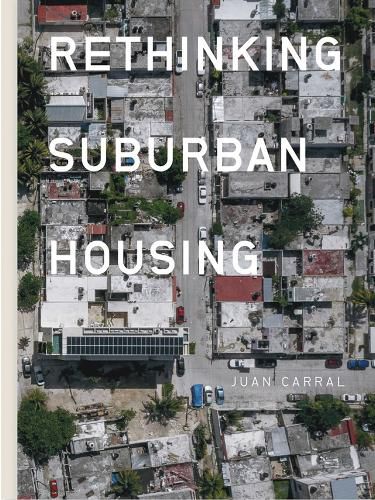Readings Newsletter
Become a Readings Member to make your shopping experience even easier.
Sign in or sign up for free!
You’re not far away from qualifying for FREE standard shipping within Australia
You’ve qualified for FREE standard shipping within Australia
The cart is loading…






The Mexican architect offers new ideas about real-estate development in underrepresented areas, promoting inclusivity and community participation
Caught between a zone of significant vehicular traffic and an area with the highest purchasing power in Cancun, the working-class community in the Mexican neighborhood of Donceles has been largely forgotten by the larger city to which it ostensibly belongs. With this in mind, Mexican architect Juan Carral (born 1976) conceived of Donceles Studios as a multipurpose building representative of the neighborhood’s diverse social strata. In this text, Carral further explores the infrastructure of Donceles, noting its rich urban layout and its self-made architectural identity as well as its privileged location and more accessible cost of living. The result is a compelling argument for a new form of experimental real estate development based on participatory strategies and an inclusive ideology. Carral urges his fellow architects to approach real estate development with a wider lens, keeping in mind a long-term vision of the city we want to have.
$9.00 standard shipping within Australia
FREE standard shipping within Australia for orders over $100.00
Express & International shipping calculated at checkout
The Mexican architect offers new ideas about real-estate development in underrepresented areas, promoting inclusivity and community participation
Caught between a zone of significant vehicular traffic and an area with the highest purchasing power in Cancun, the working-class community in the Mexican neighborhood of Donceles has been largely forgotten by the larger city to which it ostensibly belongs. With this in mind, Mexican architect Juan Carral (born 1976) conceived of Donceles Studios as a multipurpose building representative of the neighborhood’s diverse social strata. In this text, Carral further explores the infrastructure of Donceles, noting its rich urban layout and its self-made architectural identity as well as its privileged location and more accessible cost of living. The result is a compelling argument for a new form of experimental real estate development based on participatory strategies and an inclusive ideology. Carral urges his fellow architects to approach real estate development with a wider lens, keeping in mind a long-term vision of the city we want to have.